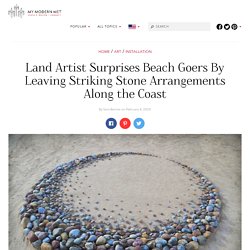

The Fitzwilliam Museum. (98) Pinterest. (98) Pinterest. 2020 AG Nature Photographer of the Year winners. Home News 2020 AG Nature Photographer of the Year winners The winning images from the 2020 Australian Geographic Nature Photographer of the year contest have been revealed.

By Australian Geographic • August 27, 2020 • Reading Time: 2 Minutes Image credit: Alex Kydd AS THE SECOND HALF OF of this extraordinary year unfolds, it’s worth noting that our annual celebration of the natural world is now in its third decade, and has clearly established itself as the most prestigious nature photography competition in our region of the world. From its outset, the contest has encouraged us to appreciate nature captured by those with the talent and the eye to frame its beauty in ways that invoke awe, wonder, occasionally sadness and sometimes outrage. Each year we get an opportunity to see the wild world presented from new viewpoints and with fresh interpretations of familiar subjects and themes. Special congratulations to the overall winner, Ben Blanche, for his arresting bushfire photograph. The Jellyfish Dance.
Thinking: Shaken Not Stirred. Prov·o·ca·tion (pr v -k sh n) n. 1. 2.

Our brain needs it. In an inquiry-centered environment learning provocations abound. The recipe? What are some ways to put that into practice in a classroom? 1. Because they are worth a thousand words. Use various strategies: – I See / I Think / I Wonder – Silent Conversation – Musical Tables etc. There are millions of photos available that can be used in inquiry on various concepts – poverty, conflict, power, gender, multiculturalism, pollution – basically anything and everything. Where is this beautiful city with skyscrapers?
It is in Africa, more exactly Congo. Power of photography. 2. I always use high quality photographs and add intriguing, confusing, or simply powerful words. 3. Whenever I use posters I am looking for simplicity…even minimalism “because it eliminates the obvious and adds the meaningful”. 4. Need I say how important they are in triggering thought and emotion? When I select videos I am looking for image quality, music (if any), and time. Shortlisted images: 2020 Australian Geographic nature photography awards. Land Artist Creates Ephemeral Stone Art on the Shores of the U.K. Land artist Jon Foreman finds comfort in arranging stones in eye-pleasing formations on the beach.

His practice, which he calls Sculpt the World, showcases rocks fashioned into swirling patterns as well as giant circles containing an array of rainbow-esque hues. “This process is therapy to me,” Foreman tells My Modern Met. “The simple act of placing stone upon stone in the sand is very therapeutic. I'm sure we all enjoy a walk on the beach but this process I find to be more immersive; being there in nature, losing myself in the work, having left behind all the stresses of day to day life.”
Foreman lives in Pembrokeshire, Wales, which is home to a generous coastline. Arranging with stone has shown Foreman some of its unexpected qualities. Land art is ephemeral and will eventually be reclaimed by the earth from which it came. Land artist Jon Foreman creates ephemeral stone art on the shores of the UK. Jon Foreman: Website | Instagram | Facebook Related Articles: The Good Project. All of us encounter challenges in our lives.

Sometimes these challenges are quickly or easily resolved. Other times, it is not clear what to do, and there is no right or wrong solution. This is a dilemma. When we are faced with a dilemma, it is important to stop and consider our choices carefully. We must also think about how our decisions will affect other people, our communities, and society. In this unit, you will listen to the stories of two people who encountered dilemmas. Obvious to you. Amazing to others. - by Derek Sivers. Learning community. Globaldigitalcitizen. The power of a provocation… – What Ed Said. Whether it ignites an inquiry or shifts the gears of learning, if it’s fuelled by careful consideration and clear intentions, a ‘provocation‘ can drive powerful learning. Considering the ‘power of provocations’ with our Lana Fleiszig recently, teachers explored the purpose of provocations, what could be used as provocation and the teacher’s role in the provocation process.
The most important question, though, is what might the provocation reveal about our learners, their thinking and learning and where to next? Our teachers collaboratively developed a list of questions to consider when designing provocations: Might the provocation excite/engage the learners and ‘hook’ them into learning?
Might the provocation ignite curiosity and wonderings? Do you begin with a purposeful provocation and then plan in response to learning? Like this: Like Loading... Thinking: Shaken Not Stirred. Prov·o·ca·tion (pr v -k sh n) n. 1.
